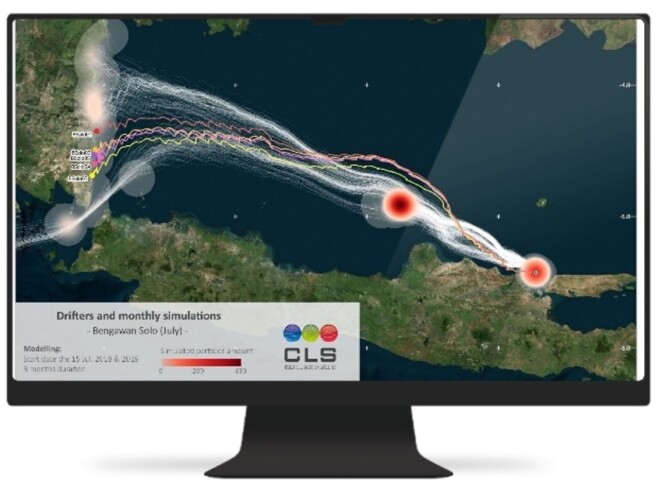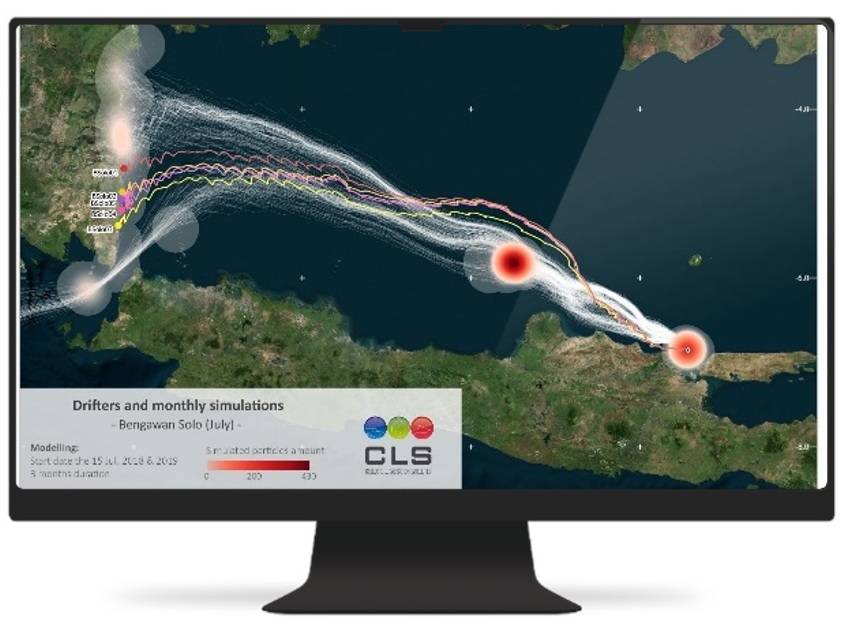

In a hi-tech version of throwing out messages in bottles, prototype trackable buoys were deployed in the waters off Indonesia, whose myriad islands result in some of the most complex, unpredictable currents on Earth.
Made from wood for maximum sustainability, the buoys were developed by French organization Collecte Localization Satellites (CLS). A subsidiary of French space agency CNES, CLS is best known for overseeing the satellite-based tracking of tagged marine animals, buoys and fishing fleets using its long-running Argos geopositioning system, which performs satellite navigation fixes and returns them to CLS via satellite link.
CLS made use of previous experience of marine plastic litter in Indonesia for the buoy deployments. It has previously teamed up with the Indonesian Ministry of Marine Affairs and Fisheries to help guide waste collection efforts—the country’s national marine pollution plan pledges to reduce plastic waste by 70 percent by the end of 2025.
Together with the tracking buoys, the MARLISAT project also involves harnessing Earth observation imagery to detect plastic sources and forecast marine plastic litter’s motion and areas of accumulation using an existing CLS ocean drift model called MOBIDRIFT.
Image Credit: CLS